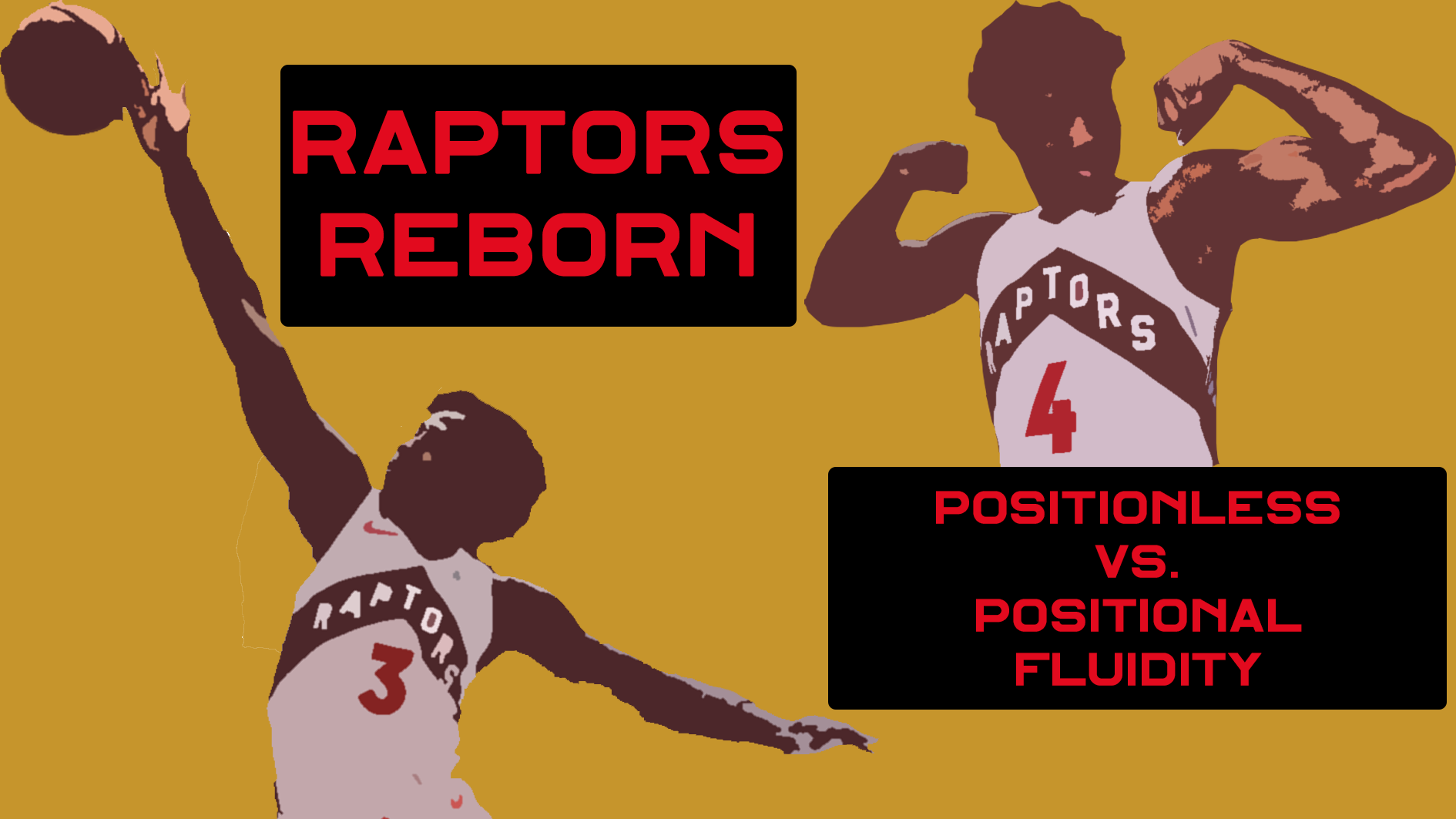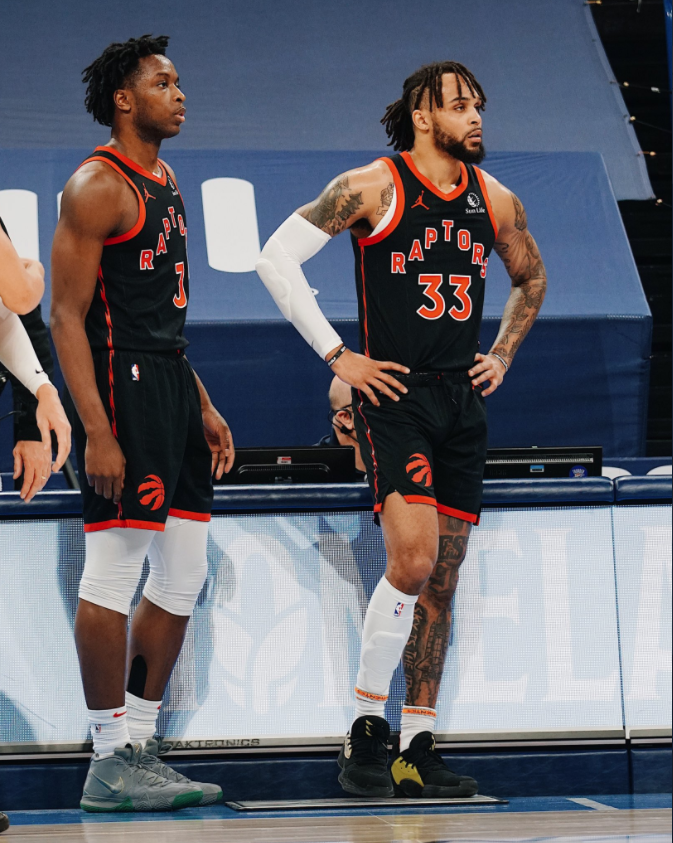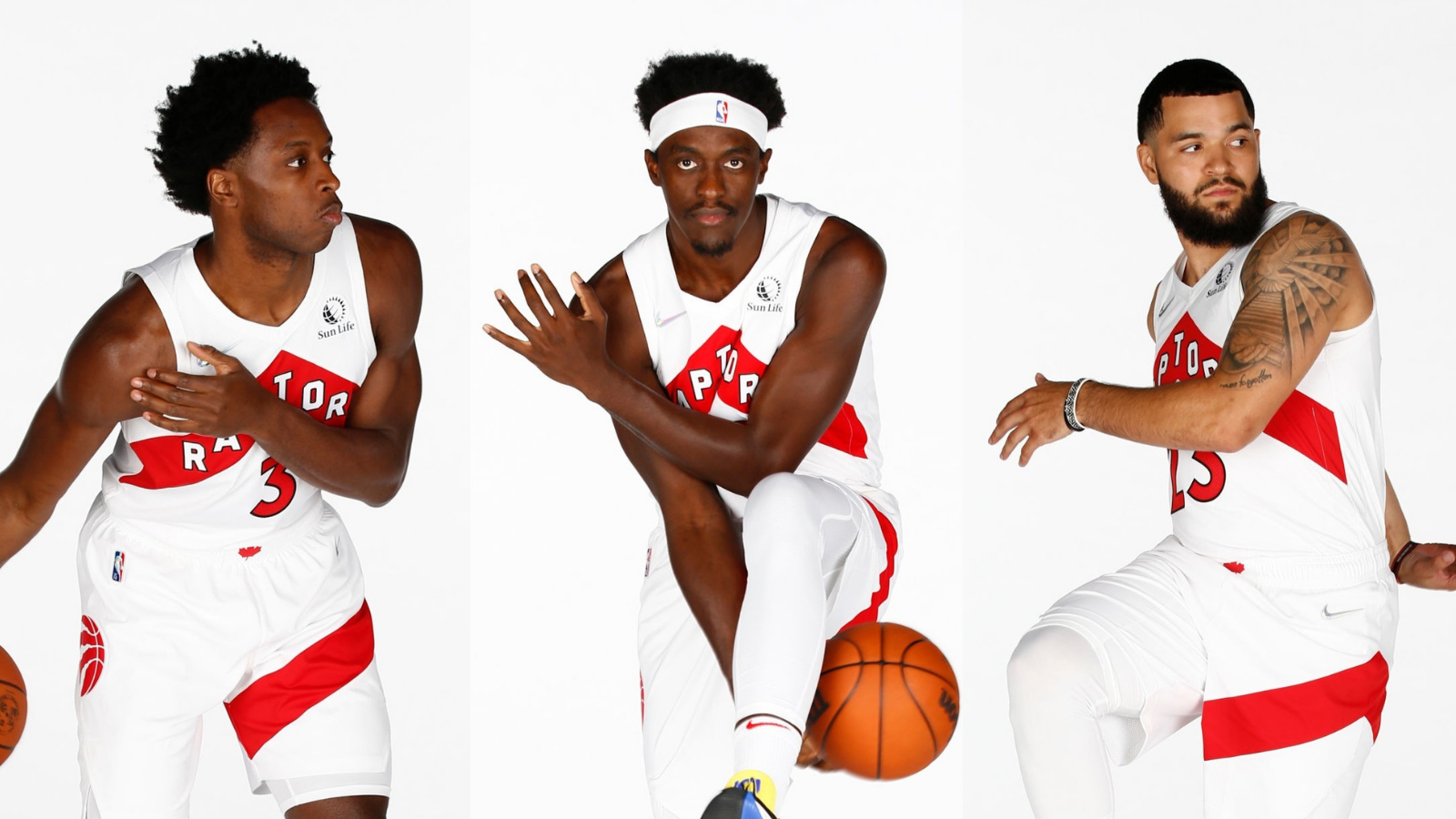Wherever you work, no matter what the job is, you’ve likely executed the duties of multiple positions. Although your job entails a specific outline for what’s expected from your position, some of us go above and beyond by carrying out additional tasks. For example, being a journalist 20 years ago was mostly about researching, writing, and interviewing. Fast forward to today and being a journalist means you write, produce, host, create content, research, interview, and are ultra savvy with social media and tech of all kind. You need to be a jack-of-all-trades in order to maximize your effectiveness. Basketball in this day and age is no different. We’ve heard of the term positionless basketball. In fact, it’s impossible to ignore it regardless of the NBA circle we enter and while it’s certainly a popular idea, positional fluidity is the more accurate depiction of the game today.
Think back to what I said about carrying out multiple tasks for work. In 2005, the qualifications of a prototypical NBA big man were basically this:
- Can post up and back down opponents
- Proficient rim protector and shot blocker
- Can occasionally hit a jumper from 15-20 feet
- Must have the strength to boxout and outwork opponents on the glass
I might be missing something but you get the gist of what I’m saying. The big man of the 2000s is prehistoric, as far as offensive expectations go. Here’s a refreshed and up-to-date list of what a modern NBA big should be able to do:
- Can post up and back down opponents
- Proficient rim protector and shot blocker
- Can consistently hit shots from 25 feet out
- Can bring the ball up
- Quick and agile enough to defend smaller guards
- Strong and scrappy enough to out work opposing big men
It’s a game that’s incorporated one element above all others: positional fluidity.
The term “stretch four” serves as an umbrella phrase for strong small forwards, and power forwards and centers, all of whom can shoot from deep and play tough defense in the paint and on the perimeter. Players like OG Anunoby and Pascal Siakam can be easily categorized with Giannis Antetokounmpo, Kevin Durant, LeBron James, and Anthony Davis, when we think of basketball as position-fluid. It’s under that same pretense that Toronto will develop Scottie Barnes, Dalano Banton, and Precious Achiuwa.
Speaking a few days ago, Achiuwa explained what the Raptors philosophy going into this season is:
“If you look, they’re basically just going for guys that are athletic, long, and can guard multiple positions on defense and that’s what the roster consists of.” He added that “you don’t gotta worry about ‘what position he’s playing’ or ‘what position I’m playing,’ it’s just read and react. ‘If he’s at this spot, I’m going to go fill out the next spot.’ It’s just reading and reacting.”
See? While basketball will never be completely positionless, and based on how the league plays today, it’s reasonable for the Raptors to play this way. In the process of developing their talent, Toronto is developing members of the roster in a similar way. There are specific things they’ll need from certain guys, but for the most part it seems like shooting and defensive versatility is the priority, regardless of the position. But to see a big like Khem Birch or Chris Boucher attempt as many trey balls as Malachi Flynn or Gary Trent Jr., isn’t reaching at all and is one of the aspects where fluidity is present.
The sequence I’m about to describe isn’t at all far-fetched when it comes to how Toronto Raptors basketball will be played throughout the 2021-22 season: The Raptors are on defense. Scottie Barnes is on the low block and swats a shot attempt by an opposing big man. The ball lands in Siakam’s hands as he brings it up on the fast break. Anunoby is in the high post, boxing out his defender with his herculean strength. Fred VanVleet has picked up the opposing big and is battling him for position on the low block. Birch is waiting outside the three-point line in the event that the opposing defense shows him no respect, leaving him wide open to knock down a three. It’s a situation that’s very likely to ensue over the course of the upcoming campaign.
On July 30th, the day after the draft, Bobby Webster held a media scrum and answered several questions, including “As we all see and we all know, the positionless-ness of the NBA now. I don’t think you can have too many of these big two-way wings. So, I think from a positional standpoint, we don’t really see it as any overlap. We see it as ‘let’s have all five guys look like him and OG and Pascal’ and all of that.”
Although Jalen Suggs was the consensus number four overall selection in virtually every NBA mock draft, the Toronto Raptors decided to go a different route and selected Barnes – a six-nine, 220 lb point guard with the defensive versatility to cover one through five. The idea was that he would provide the Raptors with a positionless lineup, capable of defending any roster on any given night. That’s not a stretch (pun intended) by any means and the ensuing events saw Toronto roll the dice with several long and wiry players. Throughout the years, many teams have experimented with their rosters and as a result, it changed the way opponents would devise a defensive strategy for them. Most recently, we saw the Miami Heat of 2012-14 and the Golden State Warriors of 2015-2019 dominate the league with their unique and unorthodox styles of play. Much has been said about those teams, and what cannot be denied is the dynasties that we all witnessed as a direct outcome of both organizations maximizing the full potential of their respective rosters.
For Miami, playing LeBron as the point guard and having multiple shooters around him was the best thing for the team and for him. At six-nine and 260 lbs, LeBron is a freak of nature and if he’s coming up the court at full speed, he’s unstoppable. The Heat realized this and therefore acquired more shooters to fill out there shooting guard, small forward, and power forward slots, while pushing Chris Bosh to the center and encouraging him to shoot from deep. It resulted in four straight NBA Finals trips and back-to-back championships.
Golden State went the opposite way. Their dominance came as a result of their best player being a shooting phenom. Some people were born to do certain things and Steph Curry was clearly born to shoot. He’s the best shooter in NBA history and has amassed virtually every three-point record you can conjure up. But if he hasn’t, just wait until he retires and that should change. Curry’s shooting, along with Klay Thompson also being a lights out shooter and elite defender, provided the Warriors with the luxury of not needing a traditional big. Draymond Green was the enforcer who at six-seven, is often undersized as a center. However, his strength and communication on both ends of the floor have anchored three championship squads in the Bay area. Mentioning Kevin Durant at this point seems like it’s overloading. But, it’s true. A seven footer that can score from anywhere on the floor, will only open up the possibilities for the greatest backcourt in NBA history.
It’d be foolish and downright silly to compare those two dynasties to a the current iteration of the Raptors. I’d describe them as a team that currently finds itself far from being a basement dweller, but also not quite near the level of contention for the coveted Larry OB it won in 2019. The organization knows what identity they want to forge, but the there’s still a long road to getting there. With that being said, it’s not that Toronto will have a roster with no set positions. Everyone on the roster plays a certain role and it often breaks the mold of what we’ve become accustomed to. The heart of the matter has to do with the versatility of this roster. Fred VanVleet and Malachi Flynn will be stationed to the frontcourt but Nick Nurse will undoubtedly cook up a formula that showcases the strengths of his roster, while maximizing their effectiveness with regards to each players physical attributes. It won’t be a matter of positionless basketball. One through 15 have the ability to play multiple positions, making this roster “position-fluid.”
Every single player on this roster has spent time logging minutes at multiple positions outside of Khem Birch and Freddie Gillespie. Siakam bringing the ball up, Anunoby locking down opposing power forwards, and VanVleet outmuscling big men in the paint are all things the NBA wasn’t used to 15 years ago. With times changing and players refining their skillsets, the league has been forced to go in a different direction. It actually surprises me that it took this long for the game to evolve to where it is now, especially when you consider that Dirk Nowitzki was a top 15 player in the league for the better part of the 2000s and 2010s. Other players like Toni Kukoc, Peja Stojakovic, and Rashard Lewis were also taller than six-nine and never averaged less than two hoists from downtown. It’s players like this that have created an interesting
Based on the Raptors personnel, every player on the roster has the tools to stretch the floor and defend. Not everyone has the shot creation ability, or even the proper shot mechanics yet. However, I’m telling you that there’s absolutely no reason to worry. Toronto’s development system is astounding. The rest of the league has tried to play catch-up and yet the Raptors 905 and their training staff is light years beyond other squads. Moreover, Toronto will likely still be a team that’s heavily reliant on the three-point shot, considering how ranked 15th in shooting percentage (36.8), yet fourth in attempts (39.3). I don’t see those numbers decreasing.
In fact, I see them increasing. Nurse, Webster, and Ujiri have all emphasized the importance of versatility, which has led many to think about the positionless age of basketball that we’re all used to. However, I’m looking at it completely different. I agree that when you analyze this roster, every player can fall into a singular position. With the exception of VanVleet and Flynn being stationed to the backcourt, every other player has the ability to play multiple positions.
Nurse and the Toronto media regaled, as they usually do, and among the exchanges that were had, he quickly fired off an idea for possible lineup combinations: “How do I get [Boucher] to small forward? I guess, if you want to call Precious. Maybe Precious, Khem, and Chris out there at the same time? I could see that happening.”
What’s not evident as you read that quote and the one coming up, is how giddy Nurse was. He clearly had to contain his excitement while imagining the possibilities in his head. If he could start the season today he would, without question. He’s excited in the same way that a mechanic sprouts up when she gets brand new tools. Or the same way an art student would waste no time using new paint brushes. The task is the same, but the tools at your disposal are new and you’ve already started thinking about the endless possibilities of how you’ll use them and what you want to create.
“I could see Khem, Precious, Chris, Pascal, and OG out there at the same time. Scottie – throw Scottie in there. Dalano. It’s too many. I mean, not all those guys can play at the same time. We’ll see depending on who we’re playing and how things develop here. There’s a lot of new things we’re doing this year that take a little time, probably, to test and polish up.” When’s the last time you saw a coach this eager to utilize his roster? I can’t recall a time myself.
As a fantasy basketball buff, one of the things I prioritize when drafting my roster is dual positionality – something that’s clearly emphasized through the Raptors roster. This position-fluid roster is clearly a fantasy for Nurse, Ujiri, and Webster. Now, they’ll try and turn that versatile fantasy into a dominant and defensive reality.



